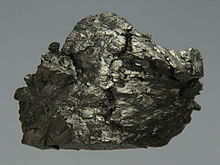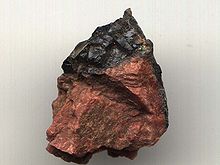Gadolinium is a chemical element with the symbol Gd and atomic
number 64. It is a silvery-white, malleable and ductile rare-earth
metal. Gadolinium has exceptionally high absorption of neutrons and
therefore is used for shielding in neutron radiography and in
nuclear reactors. Because of its paramagnetic properties, solutions
of organic gadolinium complexes and gadolinium compounds are the
most popular intravenous MRI contrast agents in medical magnetic
resonance imaging.

Gadolinium is a silvery-white malleable and ductile rare-earth
metal. It crystallizes in hexagonal, close-packed a- form at room
temperature, but, when heated to temperatures above 1235 °C, it
transforms into its ß- form, which has a body-centered cubic
structure. Gadolinium-157 has the highest thermal neutron capture
cross-section among any stable nuclides: 259,000 barns. Only
xenon-135 has a higher cross section, 2 million barns, but that
isotope is unstable. Gadolinium is strongly paramagnetic at room
temperature, and exhibits ferromagnetic properties below room
temperature. Gadolinium demonstrates a magnetocaloric effect
whereby its temperature increases when it enters a magnetic field
and decreases when it leaves the magnetic field. The effect is
considerably stronger for the gadolinium alloy
Gd5(Si2Ge2). Individual gadolinium
atoms have been isolated by encapsulating them into fullerene
molecules and visualized with transmission electron microscope.
Individual Gd atoms and small Gd clusters have also been
incorporated into carbon nanotubes.
In 1880, Swiss chemist Jean Charles Galissard de Marignac
observed spectroscopic lines due to gadolinium in samples of
didymium and gadolinite; French chemist Paul Émile Lecoq de
Boisbaudran separated gadolinia, the oxide of gadolinium, from
Mosander's yttria in 1886. The element itself was isolated only
recently. Gadolinium, like the mineral gadolinite, is named after
Finnish chemist and geologist Johan Gadolin.

Gadolinium is a constituent in many minerals such as monazite
and bastnäsite, which are oxides. The metal is too reactive to
exist naturally. Ironically, the mineral gadolinite contains only
traces of Gd. The abundance in the earth crust is about 6.2 mg/kg.
The main mining areas are China, USA, Brazil, Sri Lanka, India and
Australia with reserves expected to exceed one million tonnes.
World production of pure gadolinium is about 400 tonnes per
year.